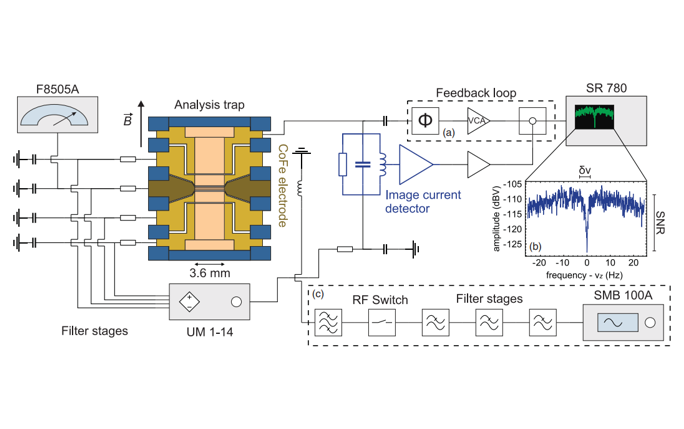High impact peer-reviewed scientific article co-authored by AVA Fellow

AVA Fellow Markus Wiesinger, who works at Max Planck Institute for Nuclear Physics in Heidelberg, Germany, was part of the team that invented novel ion multi-trap method enabling the Measurement of Ultralow Heating Rates of a Single Antiproton in a Cryogenic Penning Trap. This important achievement for the wider low energy antimatter and ion community was described in detail in an article just published in Physical Review Letters.
Antimatter is composed of antiprotons and positrons – the equivalents of protons and electrons in matter as we know it. Major advances have been made in characterizing positrons, one of the most important being very precise measurement of their mass and magnetic moment. However, the same measurements for antiprotons still remain very challenging because of the extreme experimental conditions that are required, reaching limits of even the most advanced technologies.
The international team BASE collaboration has previously developed methods for measuring the properties of protons and antiprotons, including their magnetic moments. However, to reach even higher precision, the interfering noise had to be reduced beyond previously obtainable levels.
The paper reports on the characterization of the electric-field fluctuations in a cryogenic Penning trap by explicit measurements of cyclotron quantum transition rates of a single antiproton using the continuous SternGerlach effect. The observed electric-field spectral noise density was found to be more than 2 orders of magnitude lower than in room temperature Penning traps and more than 1,000 times smaller than observed in cryogenic Paul trap experiments. Based on heating rate measurements at various particle orbits the researchers managed to identify fluctuations in the trapping field caused by residual voltage noise as the dominant heating mechanism. Even lower heating rates that would enhance the sensitivity of their experiment further will now be the subject of additional experimental studies.
Further information:
M. J. Borchert, M. Wiesinger, et al., Measurement of Ultralow Heating Rates of a Single Antiproton in a Cryogenic Penning Trap, Phys. Rev. Lett. 122, 043201 (2019).
https://journals.aps.org/prl/abstract/10.1103/PhysRevLett.122.043201